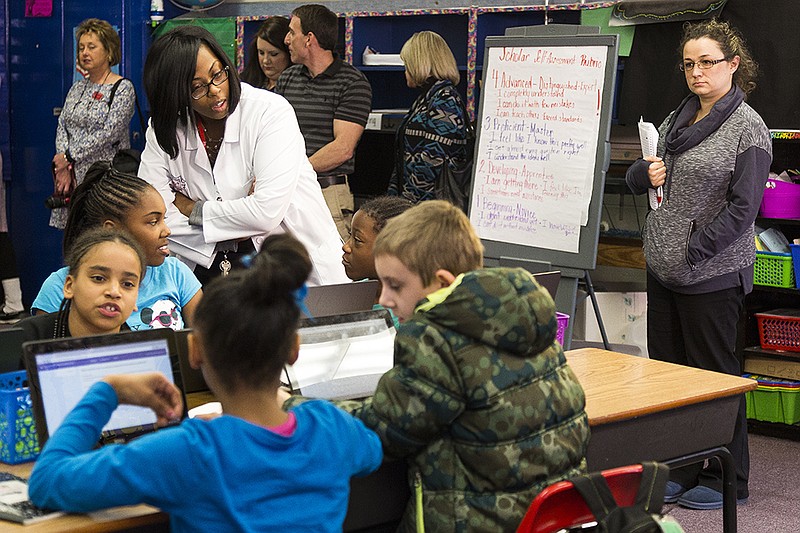Give a student the keys to knowledge and you change the world.
The magnet schools in Texarkana, Ark., School District are handing their students those keys to discover the world with project-based learning, an initiative where the teacher sets a project goal and students are given resources to accomplish it.
While there are benchmarks to measure achievement, administrators say students can pace themselves in learning and go above and beyond the goals set for them.
"Knowledge is so accessible now that in education, we almost run the risk of getting in kids' way," said Matt Coleman, director of school improvement at Arkansas High School. "Going with something like PBL gives them some control and teaches them the skills to know how, and where, to find information instead of just trying to hand it to them."
Project-based learning was put into place at the beginning of the last school year as part of a $30 million magnet grant awarded to the district in 2014, said Jennifer Richert, magnet curriculum specialist and elementary curriculum director.
"We knew it was something we wanted to include in our magnet programs," she said. "We wanted it to be implemented with fidelity and be sustainable."
TASD is creating that sustainability through training from the Buck Institute. Coleman said Buck is the gold standard in this teaching method, and TASD is the only district in the state to have a partnership with Buck.
On Thursday, administrators, teachers and systemic partnership coaches from Buck did walk-throughs of all the magnet schools as part of the seventh module in the process. Participants gathered at the end of the day to reflect on how they felt PBL was represented in each classroom.
Meredith Smith, who teaches third-grade math and science at Kilpatrick Elementary, said she felt they were creating a future of learners.
"It was kind of a relief to me," Smith said. "I felt we needed to have gold standard at the elementary level. It's like a foundation. They're going to learn those elements at the elementary level whether they're mastering the whole process or not. We're doing a lot better than we thought. I felt like today was an encouragement to see that everybody's on the right track, everybody's working hard. I feel like we're doing what we're supposed to be doing."
Coleman said having these elements available for teachers has a widespread reach in improving the quality of education, but there's no one direct measurement of the method's success.
"If you start to see our numbers increase, then I think that's a huge measurement of success, and PBL plays a big part of that," he said. Discipline and attendance have also improved, he added. And part of the goal is recruitment of not only students, but teachers, as well.
TASD has five PBL coaches who have completed a six-week college-equivalent online course, qualifying them to train administrators within the district. The plan is to train six more by the end of year to create sustainability and support for the teachers within the district because the partnership with Buck ends this year.
Administrators say enabling students to find their own path to learning is empowering for all involved.
"It's like a whole realization as a district, and as educators, that we no longer hold the keys to knowledge," Coleman said. "We're no longer handing people or telling people what they need to know."
For teachers, the hardest part of implementing PBL is at the beginning of the process, Coleman said, as it requires a lot of planning. But there's a significant reward at the end as the students take power of their own learning and actually see the relevance of it, he said, understanding, implementing and owning their work.
"We are preparing kids for a world that we have no idea what it will look like," Richert said. "By providing them the learning skills to deal with whatever challenges or solutions they need by preparing them, going through that practice themselves every day as part of their learning environment, it won't matter what the world is like. They have that thought process to apply to anything."

